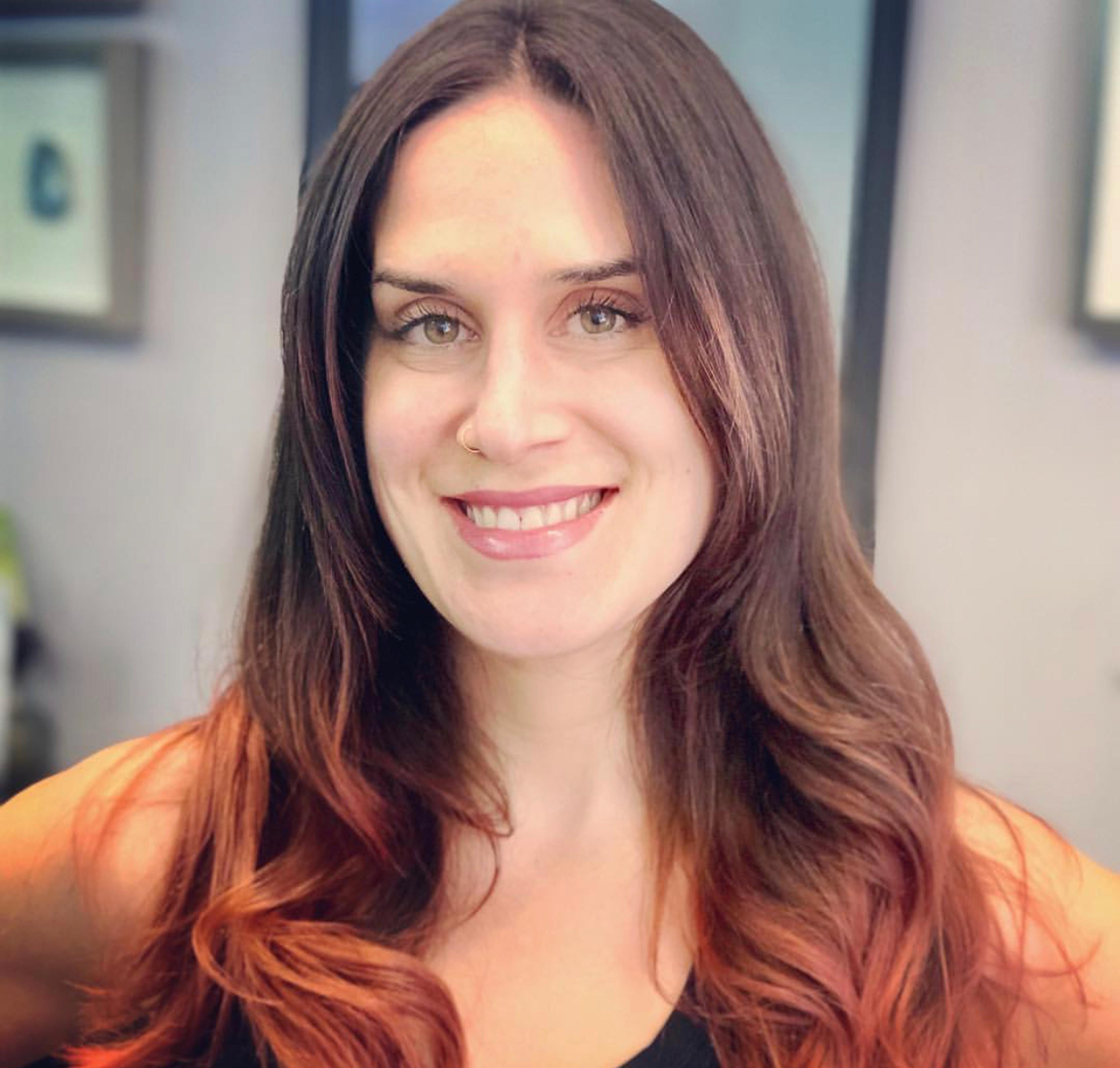
When journalist, anti-diet registered dietitian, and certified intuitive eating counselor Christy Harrison set out to write her upcoming book, The Wellness Trap, she looked no further than her own complicated health journey for inspiration. “This book is deeply personal to me, as someone with a whole host of chronic health conditions that wellness culture constantly pushes me to ‘fix’ with food, supplements, and various alternative practices that I’ve come to realize are at best unproven and often downright dangerous,” the Food Psych Podcast host wrote in a recent newsletter. But based on her own personal experience and scores of interviews with other health seekers, Harrison ultimately concluded that “wellness practices often cause more damage than the conditions they’re meant to prevent or cure and the conventional approaches they’re intended to replace.”
As Harrison explores in her book, the $4.4 trillion global wellness industry certainly seems to be built on dubious claims and plenty of phony promises. At the core of all this is the troubling definition of “wellness” in our current social media-obsessed world, a definition that keeps millions on a constant and impossible quest for “better health” and seems to be making us anything but well. And for people vulnerable to or in recovery from eating disorders, this misinformation and false hope can be particularly damaging.
What is “wellness” anyway? And what is “wellness culture”?
“Wellness” is one of those words we hear so often that we may not even realize it’s been co-opted and redefined by a variety of industries. While the dictionary definition alludes to “the quality or state of being in good health especially as an actively sought goal,” anti-diet advocates like Harrison define “wellness culture” as “a set of values that equates wellness with moral goodness, and posits certain behaviors — and a certain type of body — as the path to achieving that supposed rectitude.” In other words, “wellness culture” adopts many of the tenets of thin-worshiping “diet culture” elevates “natural” healing over conventional medicine, and emphasizes individual choice and responsibility over social determinants of health. This overall approach often leads to the cultural appropriation of certain practices, favors anecdotal evidence over scientific fact, and places blame on individual people rather than systemic issues.
“Wellness culture as we are sold it today is the idea that we are solely responsible for and able to significantly change our health, and that pursuit of health through rigorous focus on diet and exercise confers moral superiority to those who pursue it,” says Equip Director of Lived Experience JD Ouellette. “There is a lot of judgment of others in wellness culture, and wellness culture rarely acknowledges that it requires a lot of money and privilege to meet the standards and obligations it has defined. Thinness is a primary focus in wellness culture.”
Like Ouellette, many anti-diet advocates consider there to be serious dissonance between the basic definition of “wellness” and the way “wellness culture” has interpreted the term. “True wellness culture to me would be acknowledging people come in all shapes, sizes, interests, ability levels, and that we cannot ‘just’ overcome genetics and environmental influences through strict diet and exercise — even if we want to,’” Ouellette says. “Wellness would include satisfaction with oneself and life and community ties and intellectual endeavors and pursuit of hobbies. It would prioritize rest and connection-building along with eating and moving joyfully. It would have absolutely nothing to do with body size.”
How has social media impacted the rise of wellness culture?
While wellness culture predates the existence of social media, the proliferation of apps like Instagram have certainly spread the ethos of the modern movement like wildfire. From celebrities endorsing diet supplements to influencers recommending questionable workout regimens, social media is rife with problematic examples of “wellness” that many experts say are simply thinly veiled versions of diet culture.
“Social media tends to present wellness culture as an approach to a ‘healthier’ lifestyle without the ‘diet’ word attached to it,” says Equip Registered Dietitian Gabriela Cohen, MS, RD, LDN. “However, if you consider the word ‘diet’ to include any form of restriction and rigid rules, dieting is all over this new wellness culture in my opinion.”
Cohen points to a few specific examples of the blurred line between dieting and wellness, including the promotion of fasting, the moralization of foods (which she says inherently ends up moralizing the individuals eating or not eating these foods), and putting certain foods (example: celery juice) on a pedestal. “It’s clear that restrictive diets don't work, and moreover, the long-term harmful effects are both physical and mental,” she says. “But we have to always remember that the diet industry is worth billions of dollars, so what wellness culture is doing is shifting the vocabulary to keep the business going.”
Equip Regional Therapy Manager Kristen Nichols says the social media influencers at the center of modern wellness culture often have body types that are considered “socially acceptable” and “desirable,” which can have an impact on consumers. “These wellness influencers are often depicted engaging in behaviors, such as starting their day with meditation or drinking their favorite green juice,” Nichols says. “Through these portrayals, wellness is equated with moral goodness and an aspirational set of values is born.”
Just as diet culture can invoke feelings of guilt and shame in those who interpret their lack of weight loss as a “failure” (when in reality, diets themselves are based on a false premise), wellness culture can prompt the same shame response in hopeful followers. “Wellness culture is incredibly privileged and assumes everyone has the time and resources to meditate, journal, do yoga, make green juice, cook every meal from scratch, get eight hours of sleep, go to therapy, spend time outdoors, etc. daily,” Nichols says. “This is just not realistic or achievable for the vast majority of people. But nowhere in wellness culture is this unrealistic expectation acknowledged, leading, once again, to the idea that the individual has failed when they can’t live up to this ideal.”
How “wellness” culture relates to disordered eating
Nichols doesn’t just have clinical experience with the problematic side of wellness; she’s witnessed the negative effects of it firsthand. “Unfortunately, I can think of countless examples of clients, friends, and family members who have fallen victim to wellness culture at one point or another,” Nichols says. “One of the most prominent examples of this is a good friend who is convinced that doing Crossfit and altering her diet will be the answer to all of her concerns in life. After joining a costly Crossfit gym, my friend went on to try one fad diet after another because someone at her gym had recommended it to her.”
While Nichols says the intention behind these diets was never to lose weight, her friend was told these restrictive food plans would help her cultivate a “health-centric” lifestyle. “I watched my friend beat herself up for not following the diets to a T or missing a day at the gym,” she says. “It made me wonder how much this pursuit of health and wellness was actually worsening my friend’s mental health and wellbeing—the exact opposite of what she hoped to achieve in the first place. With her, there was no reasoning; the ideal of being the perfect Crossfitter and subscribing to this particular brand of wellness culture was all that mattered.”
Cohen says that—just like diet culture—wellness culture lures individuals with the promise of a fresh start that will transform their bodies and their lives. “And it’s even more convincing because it’s promoted as a lifestyle change rather than a quick fix,” she says. “The problem with this lifestyle change is that it is still based on the principle of you needing to change something—whether it’s your eating habits, body size, muscle tone, skin—because you’re not fine the way you are, or you're doing something you shouldn’t. This often leads to increased anxiety and body image struggles, and the feelings of defeat when you slip up or are not successful in maintaining this lifestyle change. These same feelings are ones that often lead to cycles of restricting food. We could say that wellness culture is a slippery slope to diet culture, which is a slippery slope to disordered eating.”
What to watch out for when it comes to wellness culture
While “wellness” itself certainly isn’t an inherently bad state of being to strive for, it’s important to know how to differentiate between truly healthy behaviors and problematic ones. “There are many wellness practices that can enhance an individual’s emotional, physical, or spiritual health on a standalone basis,” Nichols says. “For anyone intrigued by the many offerings of wellness culture, there are several ways to be a mindful consumer.”
Understand your intentions. Nichols first recommends anyone setting health goals to check in with themselves and get clear on what they are hoping to get out of adopting a certain wellness practice. “Keep an eye out for magical thinking or unrealistic expectations,” she says.
- Have realistic expectations. She also encourages individuals to do their research to ensure their expectations are aligned with reality. “If you’re hoping to achieve a certain benefit, make sure you understand how often you need to practice a certain behavior in order to achieve your desired result,” she says. “Meditation is a great example: most people require regular, sustained practice before they’re able to embody the stereotypical image of someone sitting cross legged and serene.”
- Don’t expect “perfection.” Lastly, Nichols adds that it’s essential to normalize fallibility in the pursuit of well-being. “Many people decide to try out a new practice and decide they either don’t find it useful or enjoyable or they don’t have the time or energy to make it a regular part of their life,” she says. “It’s normal to fall in and out of habits given the different seasons of our lives. Discontinuing a practice doesn't make anyone a failure, it makes them self-aware. Know that there is no moral superiority connected to forcing yourself to remain tethered to a practice that’s not serving you.”
- Have some healthy cynicism. Cohen believes it’s also essential for consumers to keep in mind that “wellness” means big business to influencers and other supposed health advocates pushing products. Rather than investing full trust into a stranger encouraging restrictive eating habits or particular workouts, tune inward and educate yourself on the true facts of well-being. “Focus more on what you can add, rather than what you can take away,” Cohen says. “Think about your hydration, your sleep, your anxiety levels. And always remember there is no need to change anything — you are more than fine the way you are. Do the work and define what being ‘well’ and ‘healthy’ means to you, taking into account that there are more aspects to health besides your food intake and the way you move your body.”
Helpful resources to navigate the world of “wellness”
Even with all these tips in mind, the wellness world can be completely confusing—particularly when it comes to weeding out diet culture rhetoric or disordered eating messages. Ouellette, Nichols, and Cohen have compiled some of their favorite resources below to help separate fact from fiction when it comes to “wellness”:
Books:
- Anti-Diet by Christy Harrison (note: The Wellness Trap by Harrison will be published in April 2023)
- Body Kindness by Rebecca Stritchfield
- The Body is Not an Apology by Sonya Renee Taylor
- Intuitive Eating by Evelyn Tribole and Elyse Resch
- Fearing the Black Body by Sabrina Strings
Social Media Accounts:
- Alexis Conason, Psy.D., @theantidietplan
- Zeynep Demirelli, MSc., @realistic.body.therapist
- Sarah Dosanjh MSc CTA MBACP, @the_binge_eating_therapist
- Saskia Carr, @intuitively.eaten
- Gaudiani Clinic, @gaudianiclinic
- Colleen Werner, LPC-MHSP(temp), @colleenmwerner
- Aubrey Gordon, @yrfatfriend
- Kara Lydon, RD, LDN, @karalydonrd
- Alissa Rumsey MS, RD, CSCS, @alissarumseyrd
- Anna Sweeney MS, RDN, CEDS-S, @dietitiananna
- Food Science Babe
- Isabel Vasquez, RD, @isabelvasquezrd
- Virginia Sole-Smith, @v_solesmith
Podcasts:







